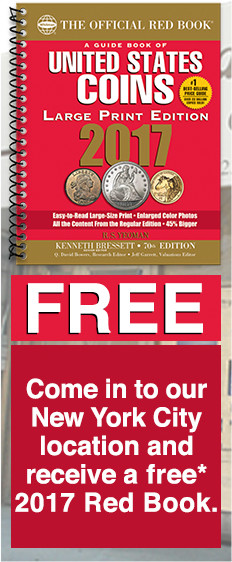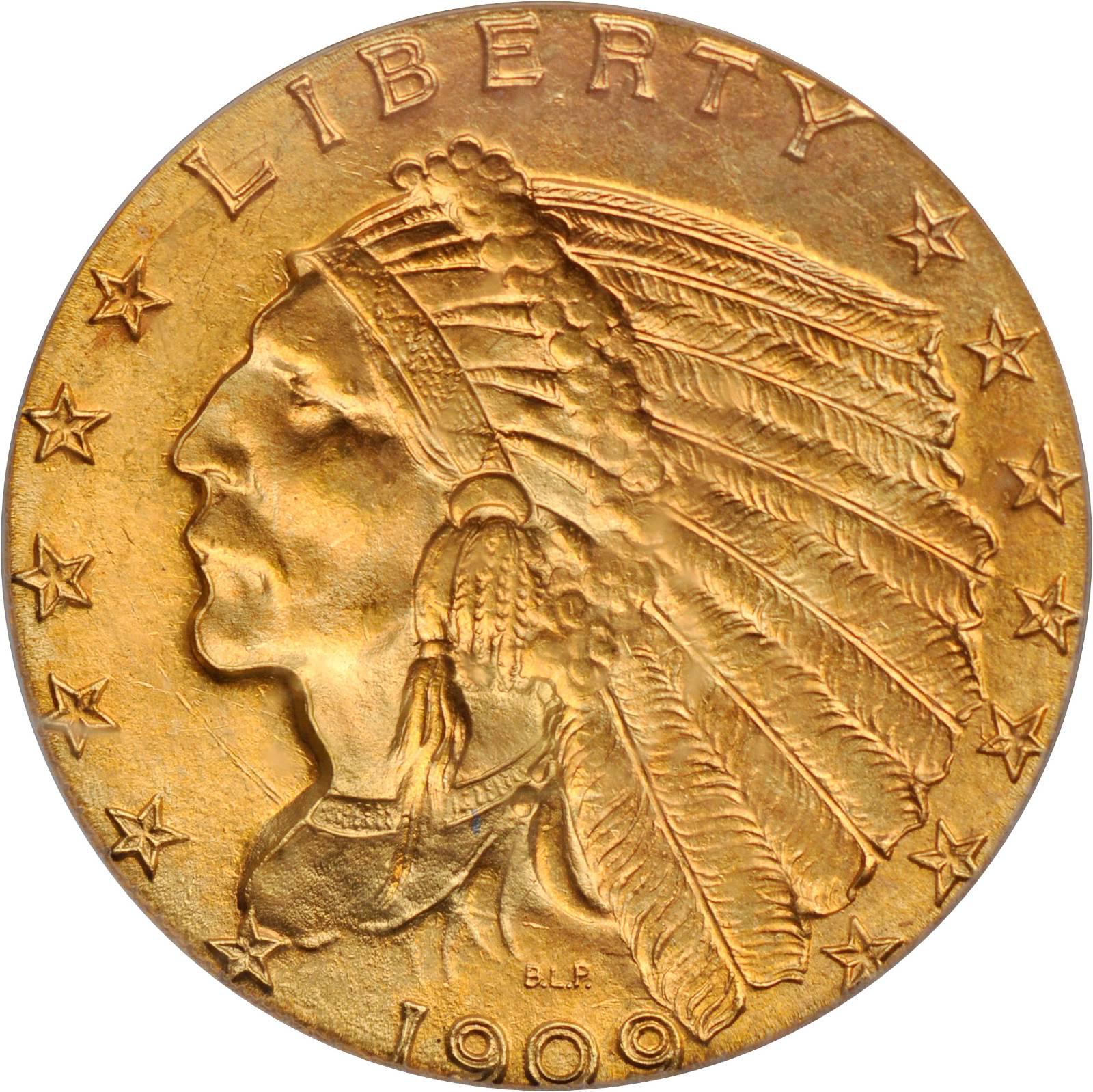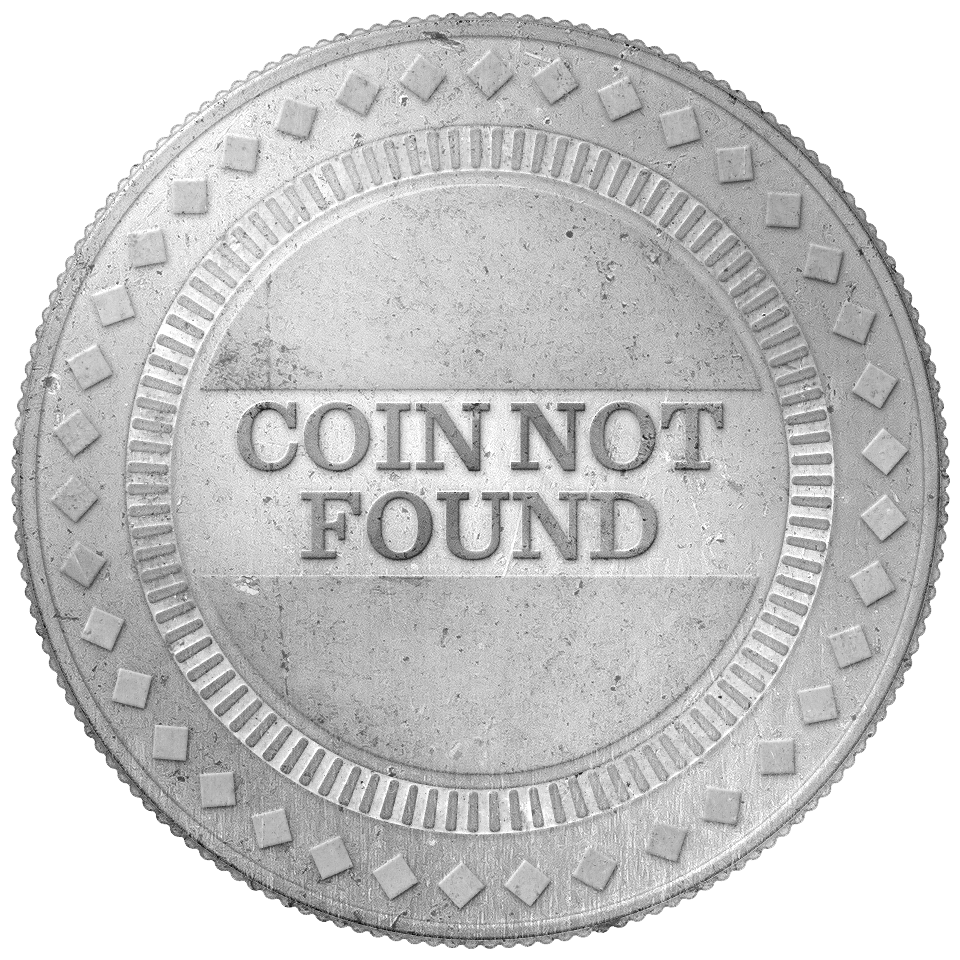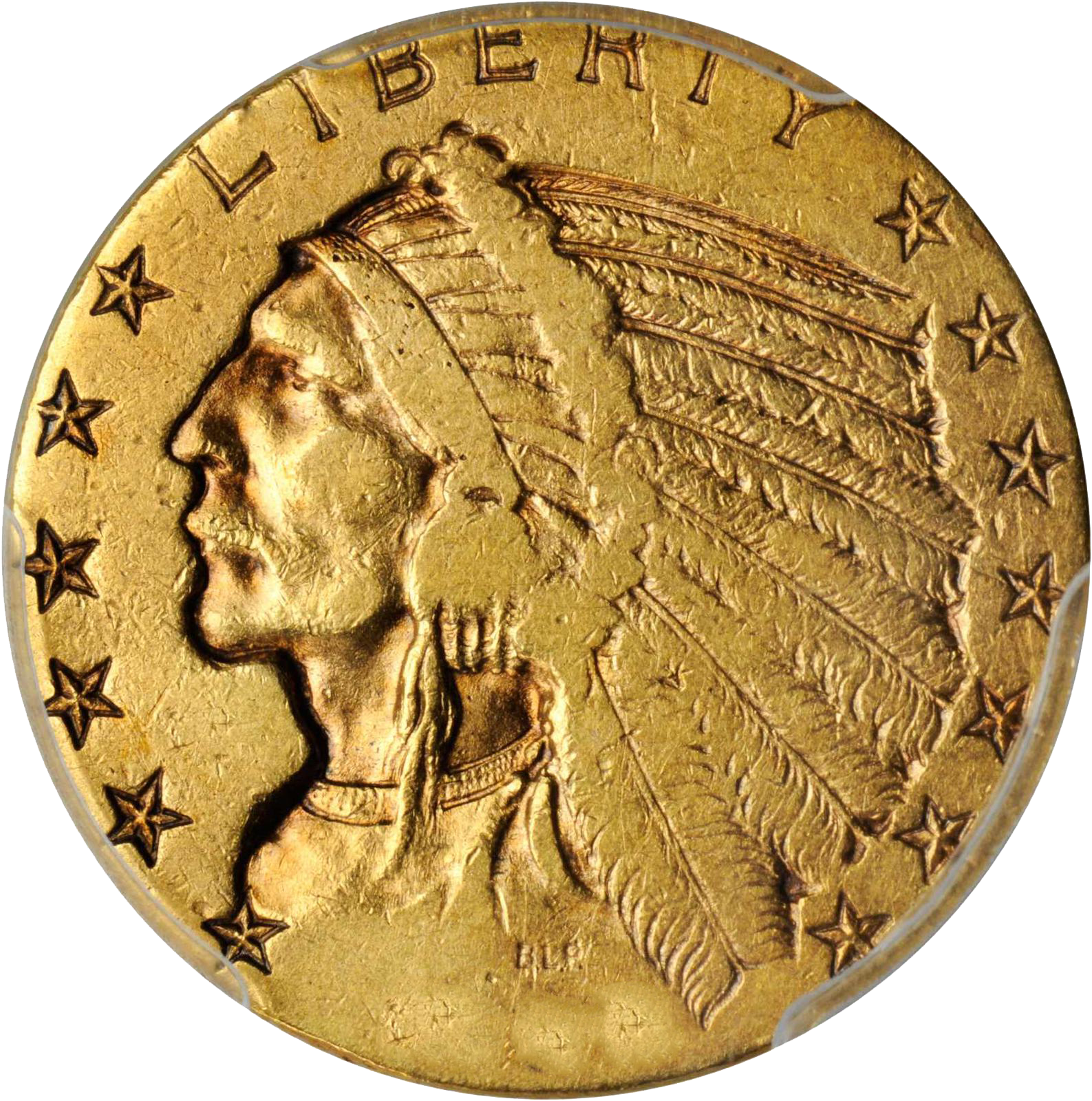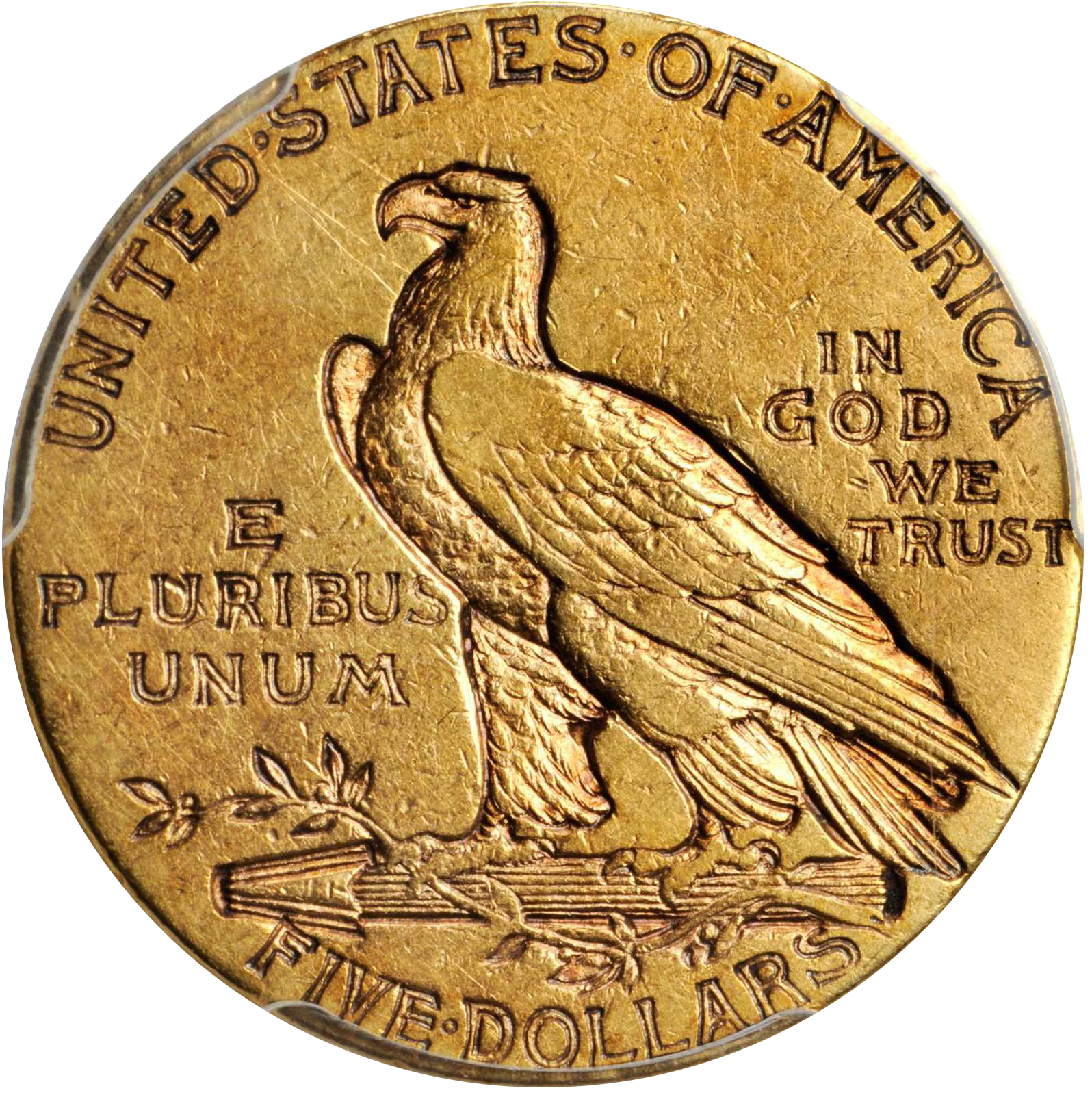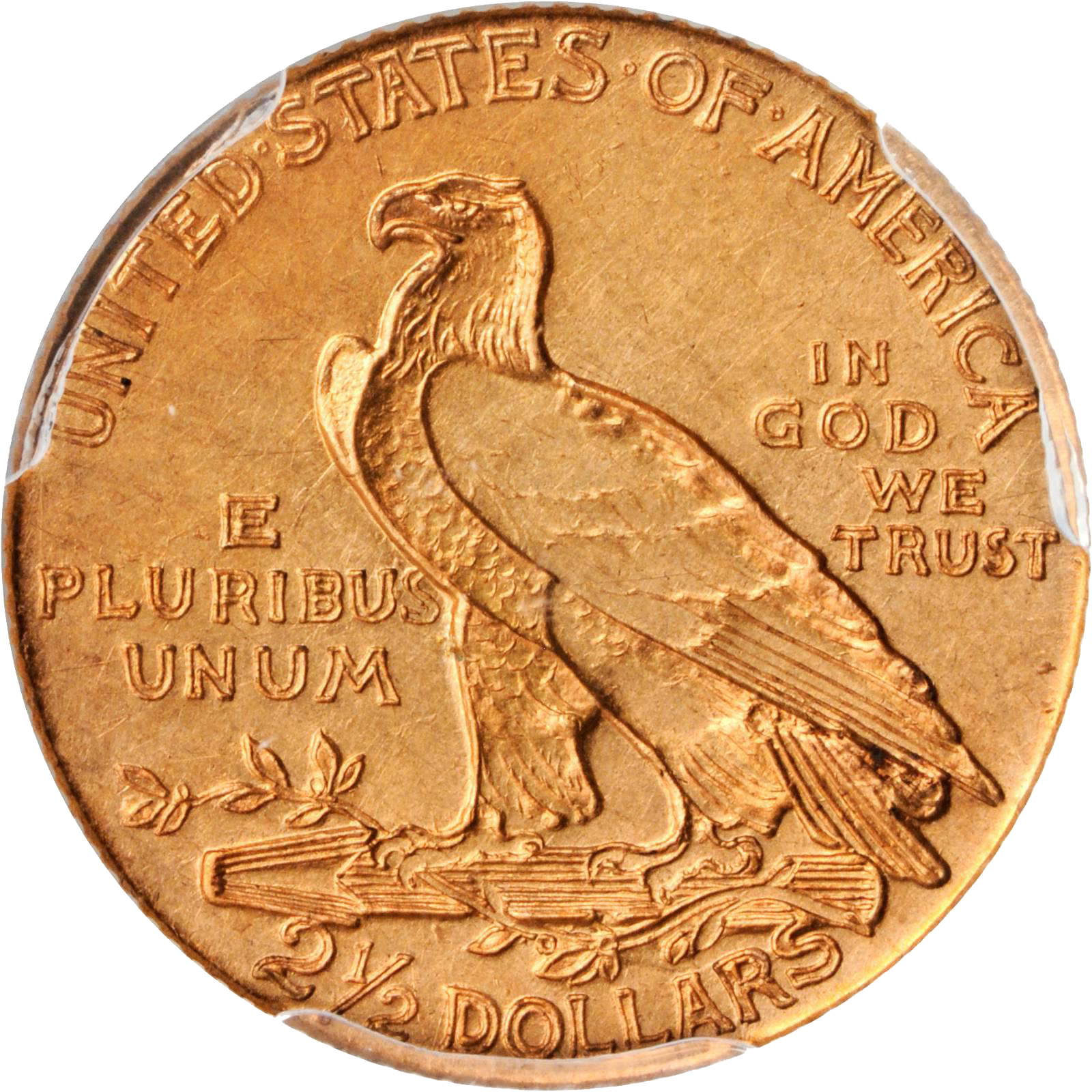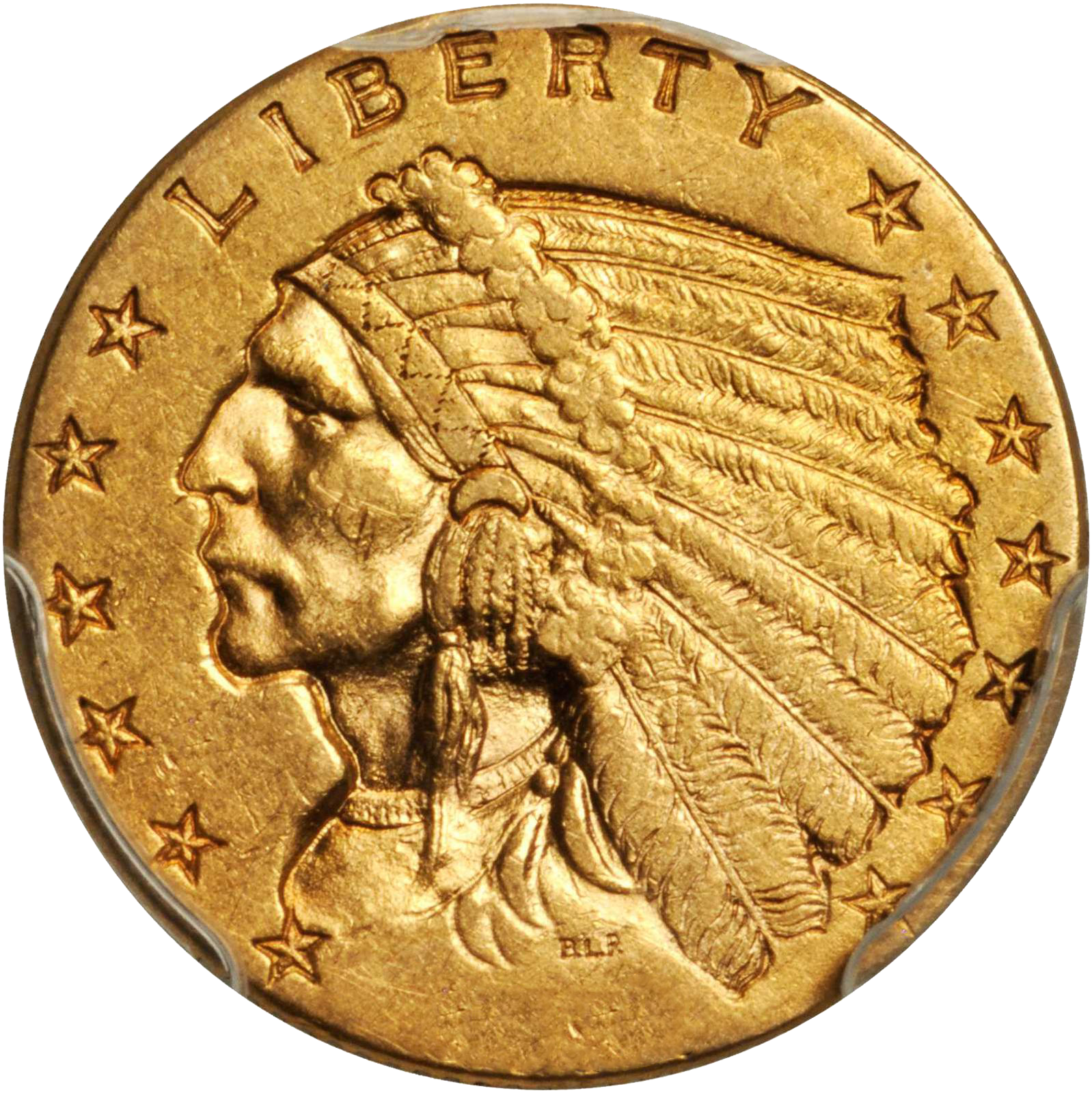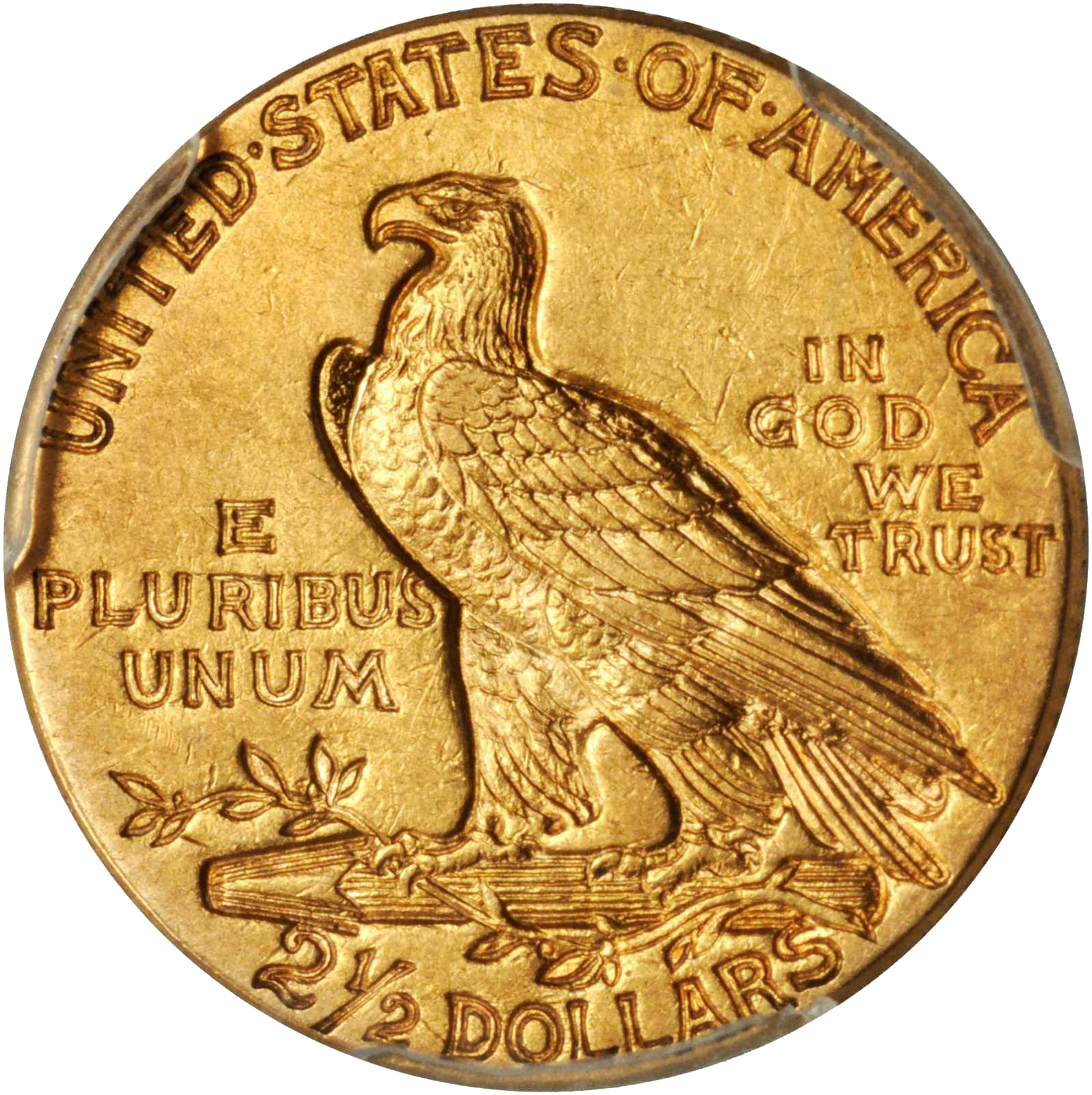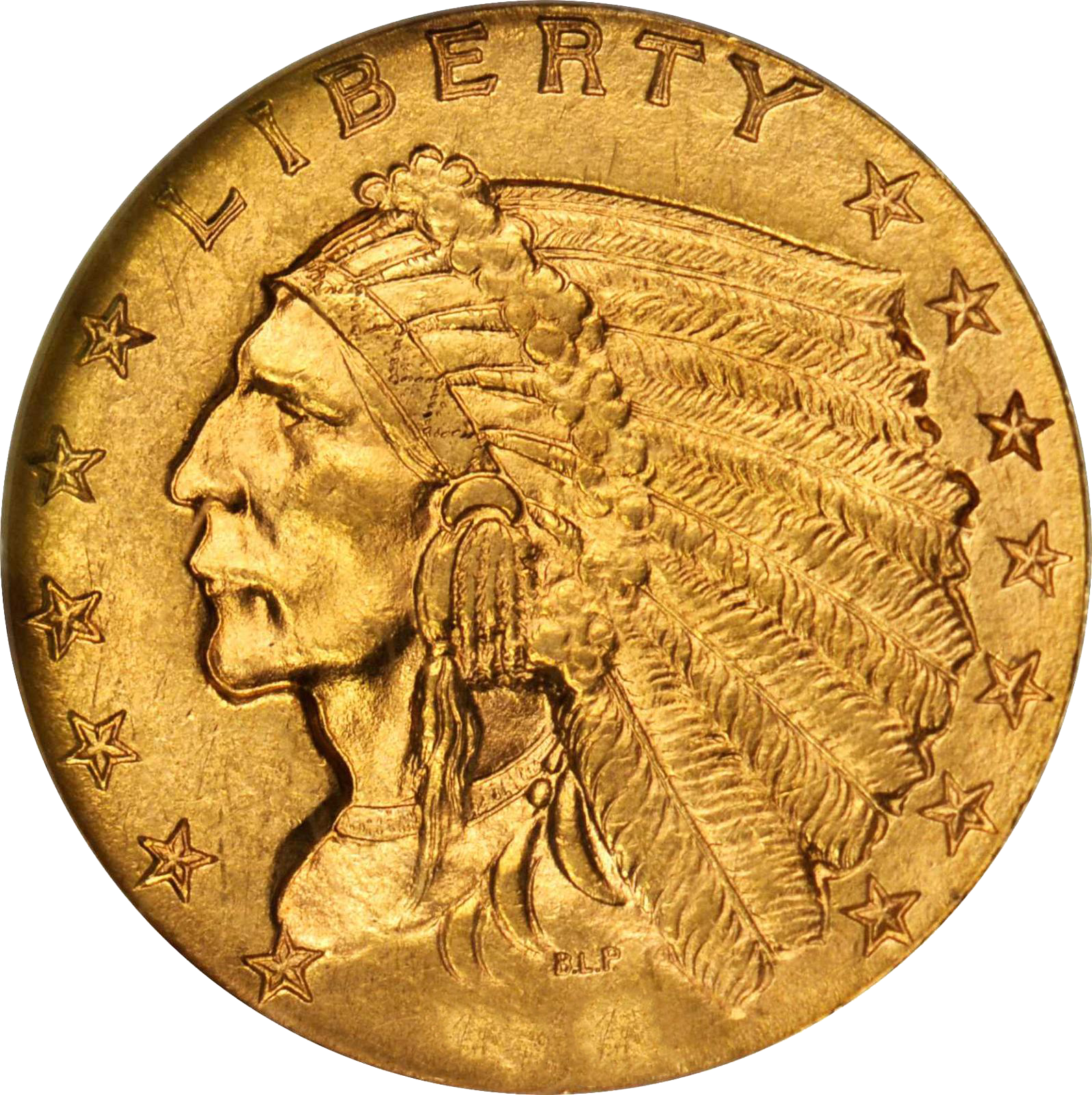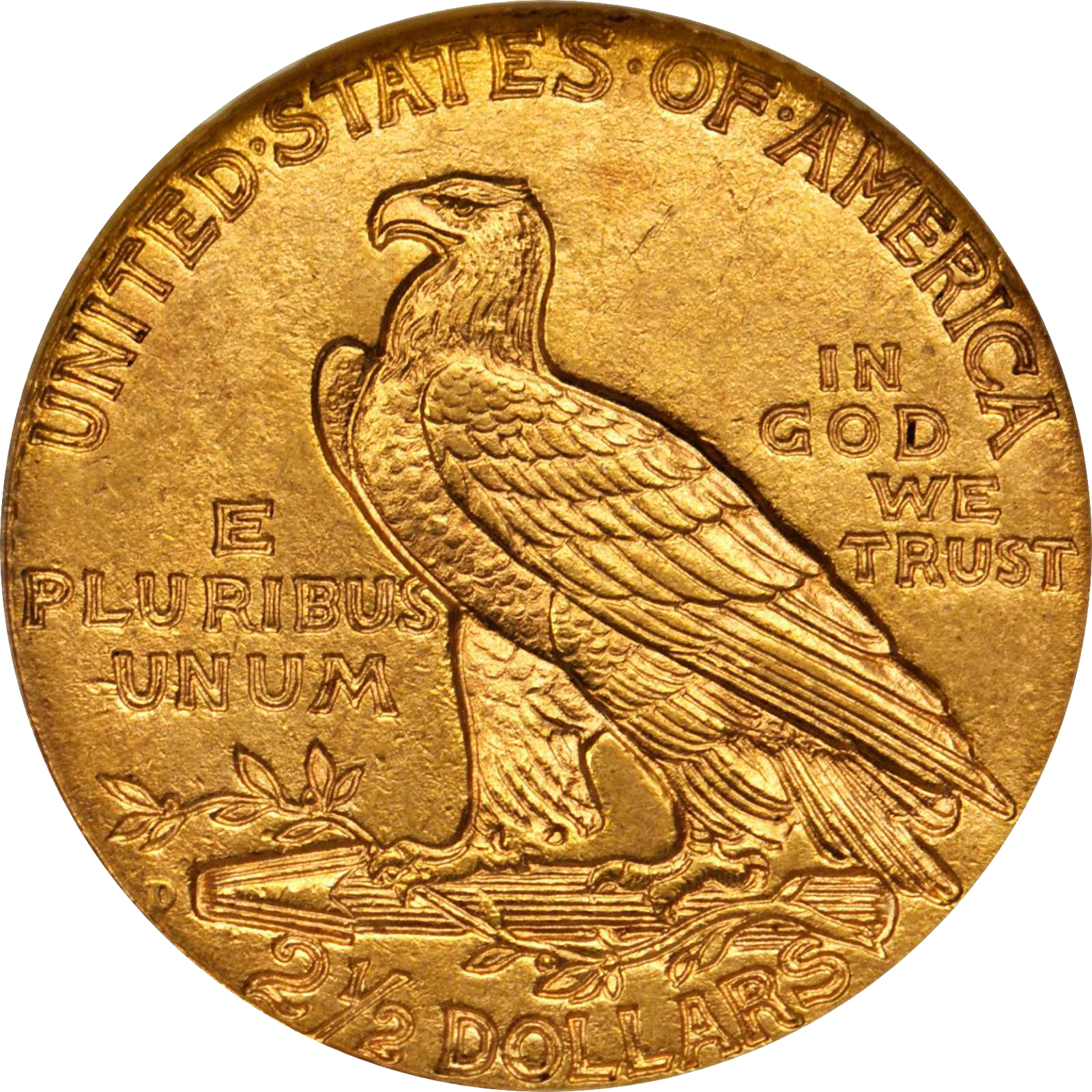Value of 1908 Indian Head $2.50 Gold
$205
$250
History, Information, and Value of 1909 Indian Quarter Eagle Gold
Value of 1909 Indian Head Quarter Eagle
Examples of this date are usually well struck, though sometimes exhibiting mild weakness at the central obverse. The reverse die had been revised for this year in order to correct the softness typically seen on 1908 Proofs, and the wing feathers are now well defined throughout. The luster is generally excellent, remaining more frosty than satiny. The color is usually medium yellow-gold, adorned by green or rose accents in select regions. While the production quality is overall good, many pieces are marred with abrasions and eye appeal tends to be poor.
The 1909 Philadelphia Mint quarter eagle is readily available in most grades, becoming only marginally scarce in Choice Mint State. Gem examples, however, are extremely scarce, and anything above MS-65 is truly rare. The finest known examples of the issue grade MS-66, though certified population are substantially skewed by resubmissions.
Proofs: The 1909, with a mintage of 139 Satin Finish Proofs, was prepared with a more vibrant satin finish that numismatists have traditionally referred to as “Roman Finish in the days when Walter Breen invented many terms. Satin Finish Proof 1909 quarter eagles were also struck with special dies on specially prepared planchets but were not sand-treated like those of 1908. As a result the Proofs of 1909 retain the original bright satin texture imparted by the dies. Although conceived as an aesthetic improvement over its predecessor, the Satin Finish proved equally unpopular with contemporary collectors, many of whom believed that the coins were too similar in appearance to circulation strikes. Sales were once again disappointing and the Mint eventually melted the Proof 1909 quarter eagles that remained on hand at year’s end. The extant population is fewer than 100 coins in all grades, perhaps as few as 50 to 60 pieces.
The text on the Indian Head Quarter Eagle reads as follows. Obverse: LIBERTY; Date; B.L.P. | Reverse: UNITED STATES OF AMERICA; E PLURIBUS UNUM; 2 1/2 DOLLARS; IN GOD WE TRUST
If the text on your coin is not consistent with the text above, you either have a counterfeit, or you have a silver round with gold toning. Silver rounds were introduced recently that bear this same design. With gold toning covering them, it could be easy to confuse your coin for a gold coin. Please look for the word “Copy,” “0.999 Fine,” or “Silver,” before asking our experts what the value of your gold coin is. If you need help determining the condition of your coin, we are rare coin experts and would love to help.




